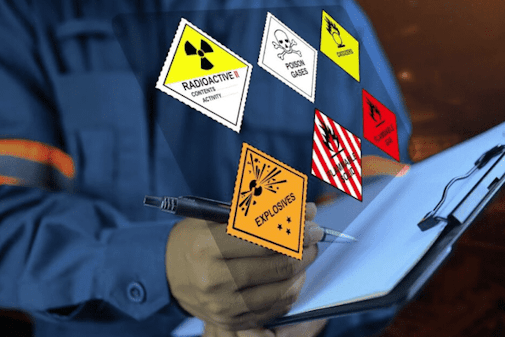
Blog
- Health & Safety
Home
Resources
Health & Safety

Michelle Ann Zoleta, Health & Safety Team Manager
(Last updated )

Michelle Ann Zoleta, Health & Safety Team Manager
(Last updated )
Effective health and safety training reduces workplace incidents, injuries, and downtime. It allows employees to identify and mitigate risks and creates a safer and more productive workplace.
In British Columbia, employers are required by the Workers Compensations Act (WCA) and the Occupational Health and Safety Regulation (OHSR) to provide employees with the appropriate health and safety training, education, and certifications. Creating a safe and healthy work environment is paramount for both your employees' well-being and maintaining a safety-conscious workplace.
Health and safety training educates employees about potential workplace hazards, their rights, and how to respond in case of emergencies. By providing this training, employers contribute to a safer work environment, ensure employees are conscious about health and safety, and safeguard the workplace from potential hazards and fines.
When it comes to worksite safety, orientation, training, and certification, supervisors are responsible for informing workers about the risks and hazards in the workplace and provide them with the training to do their jobs safely.
Employers can choose to deliver the training to the employees or through an external training provider. You can find the nearest training provider by contacting the health and safety association for your business’s industry or through the BC OHS Training Providers’ website.
The BC Public Service offers online courses through the PSA Learning System that covers some essential worksite safety topics.
Generally, all workers and supervisors, regardless of experience or job role, must undergo health and safety awareness training.
However, certain employers, workplaces, and industries are excluded from BC OHSR and follow different provisions and guidelines. These include mines and federally chartered workplaces, banks, interprovincial and international transportation, telephone systems, and radio, television, and cable services.
Here are the worksite safety trainings outlined by the BC Public Service:
Ergonomics: The ergonomics of a work environment can determine workers’ comfort and long-term health. Training on workplace ergonomics helps employees understand how to set up their workstations in ways that reduce the risk of musculoskeletal injuries and promote overall well-being.
Incident investigations: This training equips employees with the skills to conduct thorough incident investigations to identify root causes and prevent similar incidents from occurring in the future.
Emergency wardens orientation: Emergency wardens play a vital role in organizing orderly evacuations and responses during emergencies. This training prepares them to lead effectively in crisis situations.
Joint occupational health and safety committee: This training course educates employees on the functions of the JHSC, which plays a critical role in identifying and addressing safety concerns in the workplace.
Workplace hazardous materials information system (WHMIS): Employees must learn how to handle hazardous materials safely, read labels, understand Safety Data Sheets (SDS), and comply with WHMIS requirements.
New and young worker training: Ensuring the safety of new and young workers is crucial. Employers must train them to cover the basics of worksite safety, hazards, and safe practices so young workers can integrate safely into the workforce.
OHS de-escalation techniques and personal safety strategies: Employees can learn about techniques to de-escalate potentially violent situations, including strategies for ensuring their personal safety.
OHS mitigating workplace violence: This training addresses strategies for preventing and responding to workplace violence and violent situations, which helps create a safer work environment for all employees.
OHS training for managers and supervisors: Supervisors need to be aware of their fundamental responsibilities in preventing workplace injuries, managing hazards, and responding to worksite incidents. This course is not mandatory but should be taken in addition to other core safety training like the OHS Joint Committee Training.
WorkSafeBC provides a checklist of what an effective health and safety program should cover:
The Joint Health and Safety Committee, or Joint Occupational Health and Safety Committee, is a group of both workers and management representatives who collaborate to promote health and safety in the workplace. BC OHSR mandates the establishment of a JHSC in workplaces that regularly have 20 or more workers or have been ordered by WorkSafeBC to have one in place.
In workplaces that have more than 9 but fewer than 20 workers, you’re required by law to have a worker health and safety representative. This also includes workplaces with 10 or more workers employed for longer than a month.
JHSC members selected on or after April 3, 2017, must have eight hours of training and instruction on the following:
JHSC members and worker health and safety representatives are entitled to eight hours of leave per year to attend occupational health and safety training.
If your business has a workforce of 20 or 50, or more, workers and at least one workplace where there is a moderate or high risk of injury, you are required by the BC OHSR to implement a formal health and safety program.
For smaller businesses or employers with 20 or fewer workers, the health and safety program can be “less formal”.
WorkSafeBC provides a chart that can help you determine if your workplace needs a formal or informal health and safety program.
When it comes to health and safety, the BC WCA specifies certain roles and responsibilities for everyone in the workplace. These responsibilities apply equally to owners, employers, supervisors, prime contractors, and workers.
Employers, especially, have a significant role to play in ensuring the health and safety of their employees and workplaces.
They are responsible for the following:
Employers who are in violation of BC OHSR provisions may receive administrative penalties (OHS penalty) in the form of monetary fines.
WorkSafeBC can issue a fine for the following:
The amount for the fine is based on factors such as the nature and severity of the violation, a company’s history of violations, and the size of the company’s payroll. Penalties may be greater if the violation is intentional or high-risk.
The maximum fine for noncompliance is $759,368.84.
Peninsula Canada can help ensure your health and safety training is in line with BC OHS Regulation and assess your workplace for potential risks. Our award-winning HR professionals are ready to assist you with creating workplace policies that protect your business from costly penalties and fines. Contact us at 1 (833) 247-3652 to learn more.
Home
Resources
Health & Safety
